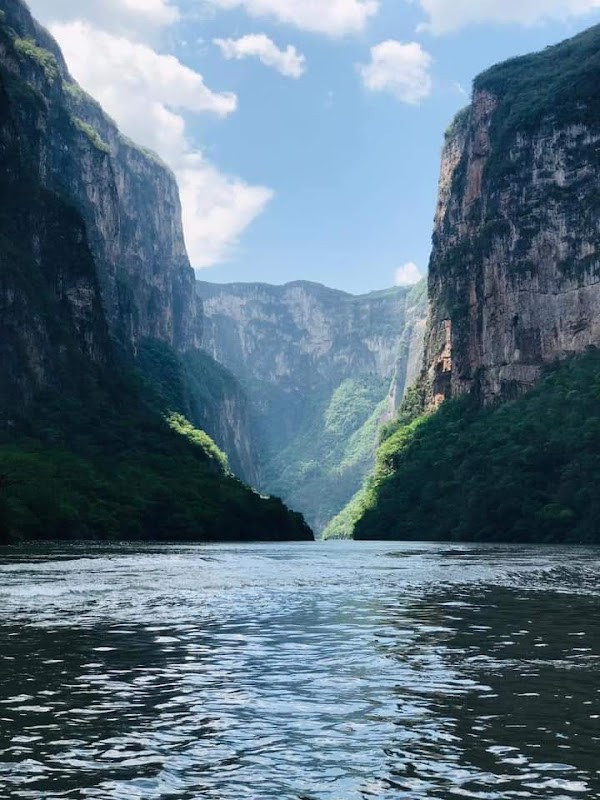
Feria Chiapas: Exploring the Heart of Tuxtla Gutiérrez’s Vibrant Festival
Experience Feria Chiapas in Tuxtla Gutiérrez, where culture, tradition, and festivities converge in a dynamic celebration. Whether you’re exploring artisan fairs, local cuisine, or vibrant performances, this event offers a rich, accessible adventure for all curious travelers.
Pace Yourself Through the Fairgrounds
Feria Chiapas spans roughly 3 km of walking paths. Wear sturdy shoes to handle paved and dirt sections comfortably across different zones.
Hydration is Key
Bring a refillable water bottle; although hydration stations exist, the festive atmosphere can easily lead to dehydration, especially in midday heat.
Plan Visits for Early Daytime
Arriving in the morning helps you avoid peak crowds and provides better opportunities to interact with locals and artisans before the bustle begins.
Keep Small Bills Handy
Many vendors at Feria Chiapas operate with cash only, so having smaller denominations simplifies purchases of food, crafts, and tickets.
Feria Chiapas: Exploring the Heart of Tuxtla Gutiérrez’s Vibrant Festival
Every November, Tuxtla Gutiérrez bursts with life as Feria Chiapas takes center stage. This annual event transforms the city into a lively convergence of culture, music, food, and tradition that reflects the richness of Chiapas. From circus performances daring you to take in feats of agility, to livestock shows showcasing regional breeds, the fair thrives as a playground for visitors craving a spirited yet grounded experience.
Located in the capital of Chiapas, Feria Chiapas offers more than just entertainment—it is an immersion into local life, appealing to adventurers who value cultural exploration alongside outdoor pursuits. The venue sprawls over several hectares with concrete pathways guiding you through pavilions filled with crafts, agricultural exhibits, and regional culinary delights. The air often carries the smell of fresh corn roasting on open fires, mingling with the distant sounds of marimba bands inviting you into the rhythm of native music.
Accessible and practical, the fair stretches across approximately a 3-kilometer route if you decide to explore every avenue and pavilion. Walking here is straightforward: expect flat terrain with occasional crowds to navigate, especially during evening hours when lights brighten the grounds and temperature drops make the festive atmosphere more inviting.
Plan to arrive early to beat the busiest hours; morning visits offer easier movement and the chance to chat with artisans before the crowds descend. Comfortable footwear is essential for the mix of concrete and occasional dirt paths. Hydration must be a priority—water stations are scattered, but carrying your own refillable bottle keeps you agile and ready.
Beyond the spectacle, Feria Chiapas fosters a respect for the land and traditions fiercely upheld by locals. Vendors offer handcrafted goods made from local materials, a reminder of the close relationship between people and their environment. On occasion, nearby hills take on a soft amber glow as the sun sets, inviting those who want to stretch their legs after a day on their feet.
Whether you’re here to sample exotic foods like "tascalate" or watch craftsmen shape wood into intricate patterns, Feria Chiapas balances excitement with the down-to-earth pace of tradition. It is a celebration that asks you not only to witness but to engage, to move with the currents of lively crowds, and to appreciate the cultural forces that pulse through this part of Mexico.
Nearby Trips
All Adventures
Boat Charters
Water Activities
Adventures near Tuxtla Gutiérrez, Chiapas
Discover the unique and memorable adventures that make Tuxtla Gutiérrez, Chiapas special.
Frequently Asked Questions
What is the main focus of Feria Chiapas?
Feria Chiapas celebrates the cultural, agricultural, and artisanal strengths of Chiapas. Visitors experience livestock shows, regional cuisine, artisan crafts, live music, and traditional dances central to Chiapas identity.
Are there any age restrictions or recommendations for visitors?
Feria Chiapas is family-friendly and generally accessible for all ages. However, busy evenings can be crowded, so families with small children should prepare accordingly for bustling spaces.
What types of local food should I try at the fair?
Don’t miss Tascalate, a traditional drink made of toasted corn and chocolate, plus regional dishes like tamales and uchepos (sweet corn cakes). Food stalls offer affordable portions made fresh daily.
Is the fair safe to explore on foot alone?
Yes, Feria Chiapas is safe during daytime and well-patrolled by security after dark. It is advisable to stay aware of your belongings, especially in crowded sections.
When is the best time to visit Feria Chiapas to avoid crowds?
Weekday mornings provide the calmest experience with easier access to vendors and artisans without the heavier foot traffic that peaks in late afternoons and weekends.
Are there opportunities for local craft shopping?
Absolutely. Many artisans display handcrafted textiles, woodworks, and pottery — all made in Chiapas traditions. The fair offers a chance to support local culture directly.
Recommended Gear
Comfortable Walking Shoes
Supports prolonged walking on mixed paved and dirt surfaces around the fairgrounds with minimal strain.
Refillable Water Bottle
Maintains hydration amidst the hustle and warm daytime temperatures.
Light Layers
Helps adjust to temperature swings between afternoon warmth and cooler evenings.
Small Daypack or Bag
Useful for carrying purchases, water, and personal essentials without limiting mobility.
Local Insights
Hidden Gems
- "The small garden pavilion showcasing native orchids offers peaceful moments away from the main festival hustle."
- "An overlooked viewpoint near the livestock expo allows panoramic snapshots of the fair illuminated at night."
Wildlife
- "Local bird species such as the Great Kiskadee and social Chachalacas are frequently spotted near green spaces surrounding the grounds."
History
"Feria Chiapas began as an agricultural exhibition in the mid-20th century and evolved into a major cultural event, reflecting the state’s diverse heritage and economic pillars."
